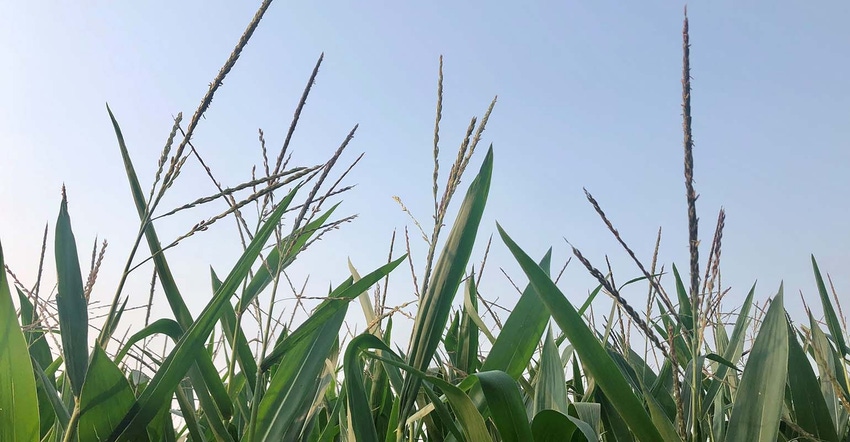
Some farmers saw crop-wilting heat this past week, but on the whole, the weather wasn’t enough for USDA to make significant cuts to quality ratings in its latest crop progress report, out Monday afternoon and covering the week through July 17. Corn ratings were mostly steady, with soybeans easing slightly lower. Spring wheat quality ratings saw some even more interesting shifts this past week (more on that below).
Corn ratings were mostly steady in the top two quality categories, with 64% still rated in good-to-excellent condition this past week. Analysts were generally expecting to see a one-point decline, in contrast. Another 25% of the crop is rated fair (down one point from last week), with the remaining 11% rated poor or very poor (up a point from last week).
More than a third (37%) of the crop is now silking, up from 15% a week ago. That’s still well behind 2021’s pace of 52% and the prior five-year average of 48%, however. And 6% of the crop has now reached the dough stage, just behind the prior five-year average of 7%.
Soybean quality slid a point lower, with analysts expecting to see no weekly change. Sixty-one percent of the crop is now rated in good-to-excellent condition, with 29% rated fair (unchanged from last week) and the remaining 10% rated poor or very poor (up a point from last week).
Physiologically, 48% of the crop is now blooming, which is up from 32% a week ago. That’s significantly behind 2021’s pace of 61% and moderately behind the prior five-year average of 55%. And 14% of the crop is setting pods, versus the prior five-year average of 19%.
Spring wheat quality ratings were moderately scrambled this past week. Seventy-one percent of the crop is now rated in good-to-excellent condition, firming one point from a week ago. Another 23% is rated fair (down two points from last week), with the remaining 6% rated poor or very poor (up a point from last week).
A little over two-thirds (68%) of this season’s spring wheat crop is now headed, which is up from last week’s mark of 44% but well behind the prior five-year average of 90%.
The winter wheat harvest made some inroads this past week, moving from 63% complete a week ago up to 70% through Sunday. That puts this season’s effort just behind the prior five-year average of 71%.
Click here for more data from the latest USDA crop progress report, including the agency’s observations on days suitable for fieldwork and topsoil moisture conditions.
About the Author(s)
You May Also Like






